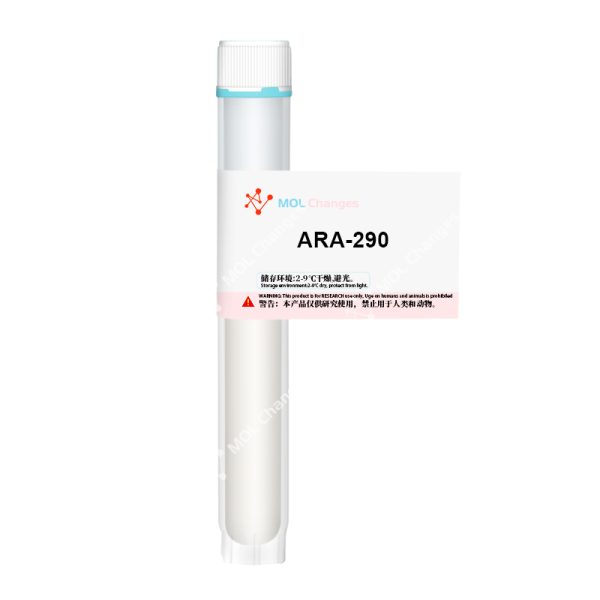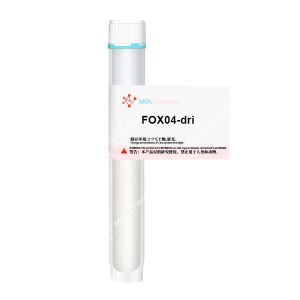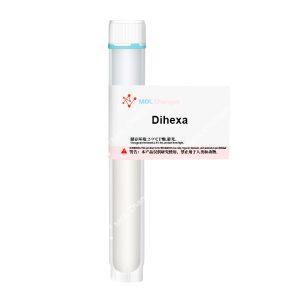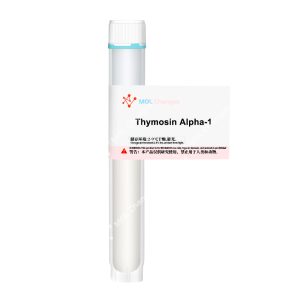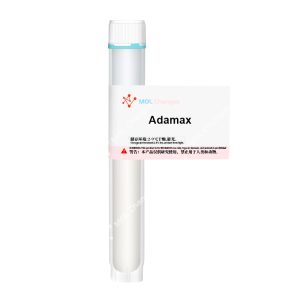ARA-290 is a synthetic peptide composed of 11 amino acids, derived from a three-dimensional structural model of the endogenous hormone erythropoietin (EPO). It mimics the binding interface of the erythropoietin receptor β-co-receptor (βcR), selectively activating the repair receptor protein. More importantly, this mechanism circumvents the proliferative risks potentially associated with traditional EPO receptors.
First reported in 2008, the emergence of ARA-290 signifies a strategic shift in EPO research from hematopoietic therapy toward targeted tissue repair and immunomodulation.
Mechanistically, by binding with high affinity to the IRR, ARA-290 selectively activates key downstream signaling pathways, including JAK2-STAT3 and PI3K-Akt, which ultimately modulate critical effectors like NF-κB.
Beyond this, ARA-290 demonstrates potent anti-inflammatory and immunomodulatory effects, promotes neural repair and alleviates neuropathic pain, regulates metabolism, and shows therapeutic potential for treating small fiber neuropathy, Charcot-Marie-Tooth disease, and diabetic neuropathy.
Sequence
H-Pyr-Glu-Gln-Leu-Glu-Arg-Ala-Leu-Asn-Ser-Ser-OH
CAS Number
1208243-50-8
Molecular Formula
C51H84N16O21
Molecular Weight
1257.3
Research Of ARA-290
1.Enhancing the Angiogenic Potential and Homing Capacity of Circulating Endothelial Progenitor Cells:
- Firstly, ischemic diseases represent devastating vascular disorders. With the prevalence of obesity and diabetes, the number of affected patients continues to rise. Consequently, for individuals with severe vascular disease, amputation remains a primary treatment option.
- In a relevant study, ARA-290 was administered to mice with chronic limb ischemia (CLI). Results demonstrated that ARA-290 significantly enhances proliferation/ migration and resist hydrogen peroxide-induced apoptosis.
- Additionally, a single injection of ARA-290 improved limb blood flow and capillary density.
Collectively, these findings indicate that using ARA-290 as an adjuvant can enhance the intrinsic angiogenic properties of Endothelial colony forming cell(ECFCs) and their in vivo homing to ischemic sites, thereby stimulating angiogenesis. Thus, this provides a practical new therapeutic approach for chronic ischemic diseases.
2.Improving Insulin Release and Glucose Tolerance in Type 2 Diabetes Patients:
In the metabolic domain, ARA-290 significantly enhances glucose tolerance in diabetic rats without affecting non-diabetic rats. Specifically, it stimulates elevated GSIS(Glucose-Stimulated Insulin Secretion) levels, ultimately improving glucose oxidation and Adenosine triphosphate(ATP) production. Through this mechanism, by influencing ATP-sensitive potassium channel(KATP) channel closure, it ultimately impacts insulin secretion.
3.Anti-inflammatory and Neuroprotective Effects:
To evaluate neuroinflammation, in a therapeutic trial involving Lewis rats with experimental autoimmune encephalomyelitis (EAE), continuous administration of ARA-290 injections significantly reduced the severity of EAE in rats. In particular, this treatment diminished the accumulation of inflammatory cells in the EAE spinal cord and suppressed the proliferation and expression of cytokines such as interleukin, tumor necrosis factor-α, and inducible nitric oxide synthase in the EAE rat spinal cord.
Furthermore, in vitro studies demonstrated that ARA-290 inhibits Th1 and Th7 cell polarization in EAE lymphocytes. Together, this experiment indicates that ARA-290 has potential therapeutic value for multiple sclerosis.
4.Promoting Neural Repair and Alleviating Neuropathic Pain:
Notably, ARA-290 can directly cross the blood-brain barrier, enabling it to act directly on dorsal root ganglia and microglia. There, it suppresses abnormal discharges in the brain’s central nervous system, reduces central sensitization, and actively modulates neurotrophic factors while decreasing inflammation in the dorsal root ganglia to repair the central nervous system.
5.Enhancing Tissue Repair and Regeneration Capacity:
Finally, ARA-290 acts on innate immune cells expressing IRR, which powerfully promotes their polarization from the pro-inflammatory M1 phenotype to the anti-inflammatory and pro-repair M2 phenotype. As a result, it suppresses excessive inflammatory responses while stimulating the secretion of abundant growth factors, clearing apoptotic cells, and forming new blood vessels. Ultimately, this improves the structural integrity and mechanical properties of repaired tissues.
COA
HPLC
MS




